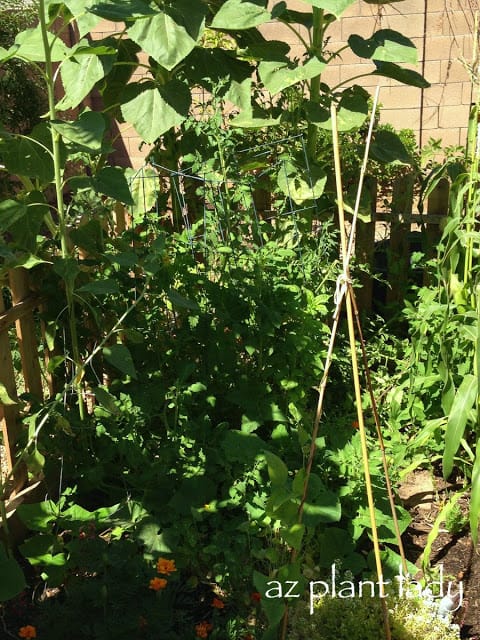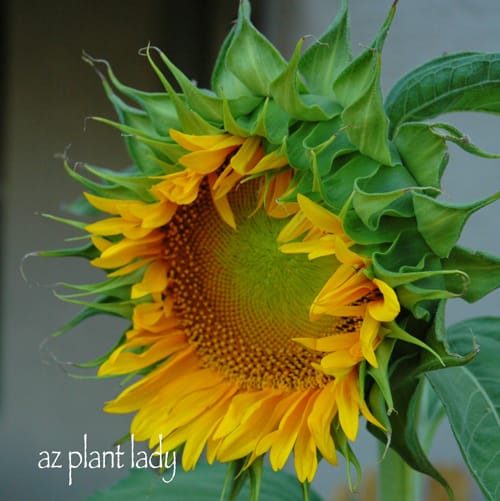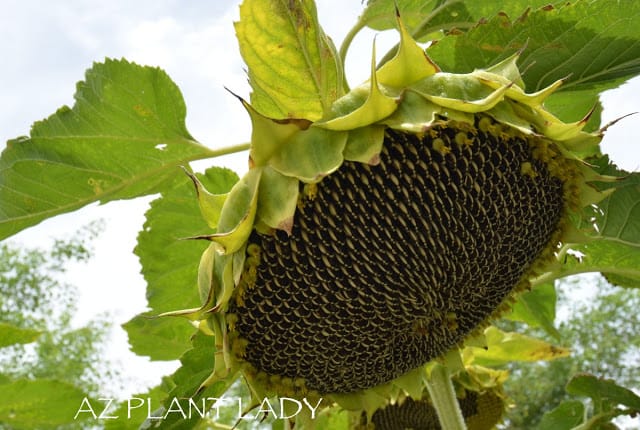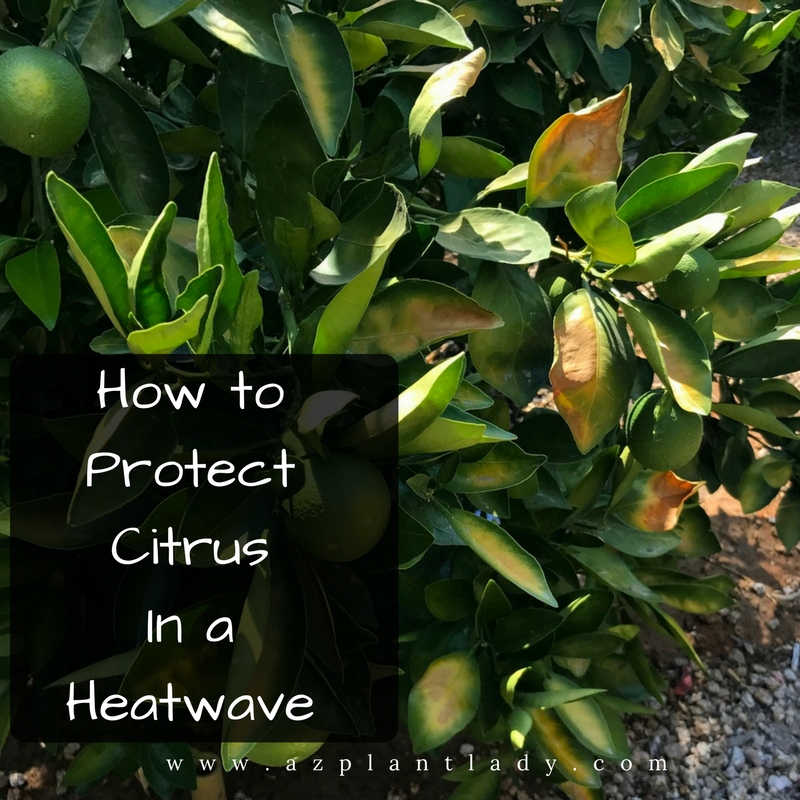
Living in the desert southwest has its perks, I am blessed to be able to grow a variety of citrus trees in my garden and they do very well under most circumstances because I protect citrus trees during hot weather.
However, when temperatures outside of the average highs and lows occur, steps need to be taken to protect them. With this week’s record-breaking highs, my orange tree has been suffering as is evident from its sunburned leaves. So I thought, this is a great opportunity to talk about how to protect citrus trees from a heatwave.
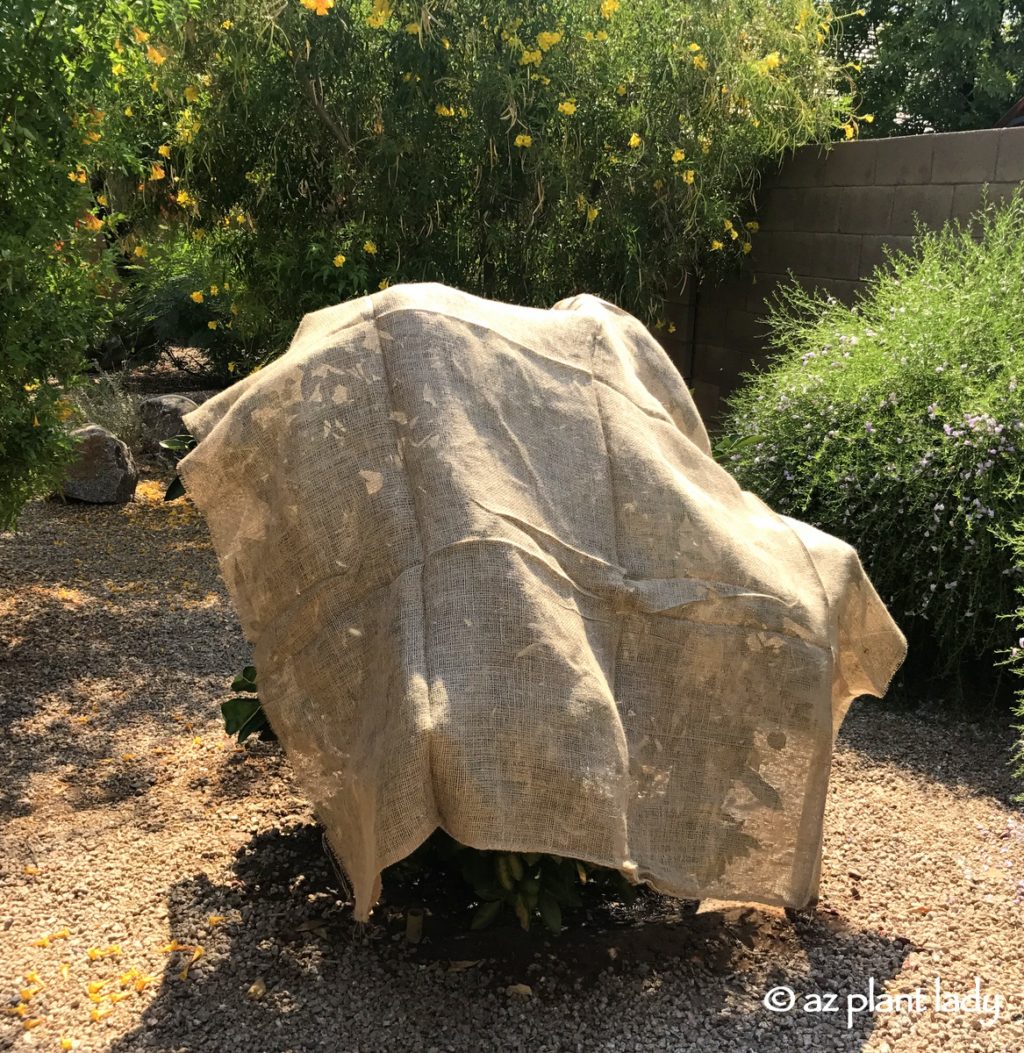
1. Protect Citrus Trees Provide Temporary Shade
Sunburn isn’t just a human woe; it affects citrus trees too. The west and south-facing sides of citrus trees are susceptible to sunburn during a heatwave. This shows up as yellowing or browning on the leaves on those sides of the tree. Sunburn can also occur on immature citrus fruit, so it’s important to protect them.
Burlap is a Great Shade Cover for Trees
While spraying citrus trees with sunscreen isn’t an option, adding temporary shade is, especially for citrus trees facing south and west that are particularly vulnerable. Put a large piece of burlap over the tree, focusing on those south and west-facing exposures. Burlap is lightweight and inexpensive. It allows some sun to penetrate, which is important, without overwhelming the tree. You can purchase burlap at your big box store, nursery, or Amazon (affiliate link below).
Burlapper Burlap Garden Fabric (40″ x 15′, Natural)
Shade Cloth Protects Citrus Trees
Shade cloth is an adaptable guardian against sunburn. Whether draped over a scaffold or enlisted to shield neighboring plants, its sun-blocking power proves invaluable during heatwaves. You can easily use a bed sheet in place of burlap for temporary shade. Another option would be to place a shade tent/canopy to help block the sun’s westerly rays.
Shade cloth is very useful as a sun shield when placed on a scaffold or other support – it also works great to help protect other plants in your garden.
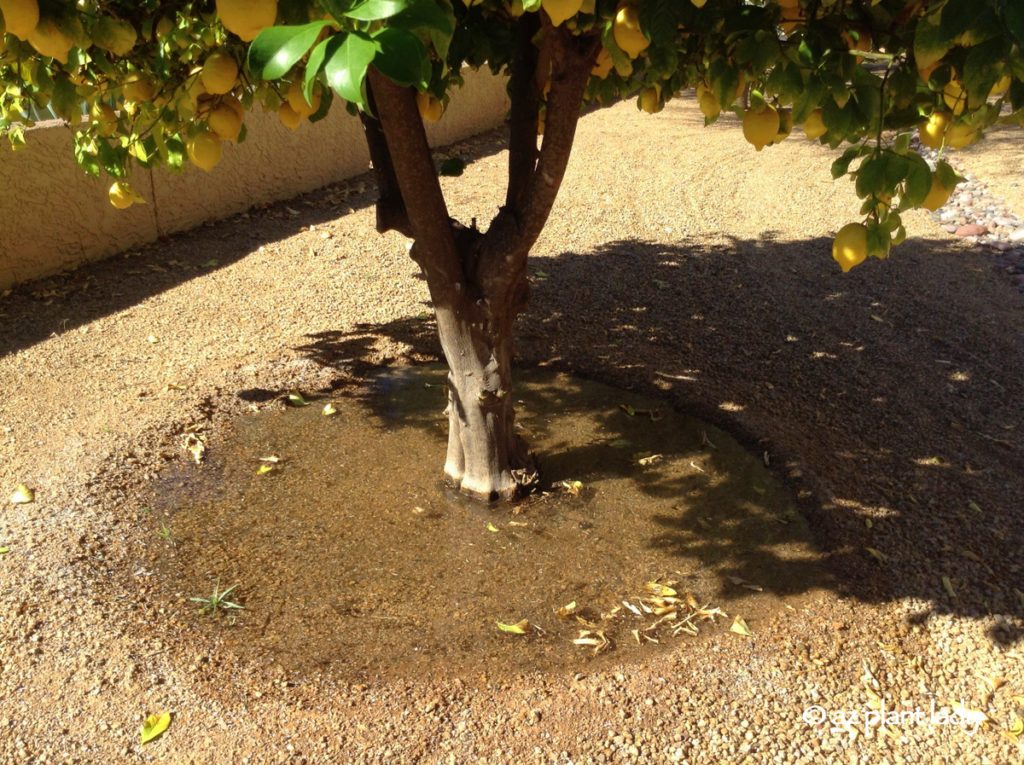
2. Increase Irrigation and Water Early to Protect Citrus Trees
When temperatures soar above normal, citrus trees, like most plants, lose more water through their leaves. As a result, their regular watering schedule isn’t enough to meet their needs, so increase the frequency of watering as long as the heat wave lasts.
The Morning Watering Advantage for Citrus
Watering isn’t just about quantity; timing matters. When you water is vital as it is difficult for plants to uptake water in the middle of the day. This is because all of their resources are dedicated to enduring the stresses of the heat and it’s hard for them to divert those to uptake water. Water in the early morning, will allow them to build up a water reserve that will help them bolster their endurance throughout the day.
Restoration after the Extreme Heat and Sun
When the heatwave subsides, it’s time to bid farewell to temporary shade. Remove the temporary shade in order to protect citrus trees for cooler conditions. As temperatures stabilize, return to your usual watering schedule. By implementing these two proven techniques, you’re empowering your citrus trees to defy the scorching grip of brutal summer temperatures and minimize any negative effects.
Beyond Heatwaves: Year-Round Trunk and Bark Care to Protect Citrus Trees
Remember, safeguarding citrus trees transcends seasons. Ensuring your trees’ trunks and bark receive proper sun protection is a year-long responsibility. Explore this previous blog post for insights on why and how to provide this vital shield.




